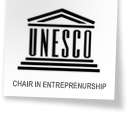The aim of this course is to identify the points of reference of national competitiveness, starting with productivity which results from strategies and operational practice of local enterprises, cluster vitality and quality of business environment in which market competition occurs. Course emphasizes interaction between the role of government, enterprises, trade associations, universities and institutions which influence national competitiveness. The key topics are: 1.Enterprises, sectors and location: Introduction to competitiveness, sectoral competition, strategy and location; international competition; 2.Microeconomic business environment: diamond model: developed, developing countries, transitional countries; clusters and competitiveness, clusters in transitional countries, institutions for cooperation, internationalization of enterprises in developing countries; 3.Economic strategy for countries and regions: economic strategy of countries on the rise; economic strategy of developing countries; economic strategy of state and regions within the state; economic strategy and international cooperation; 4.European competitiveness, Croatian competitiveness.
Course is founded on analysis of cases of developed market economies and developing countries. Course has been developed according to the Microeconomics of Competitiveness course, which is taught at Harvard Business School by Professor Michael Porter.







